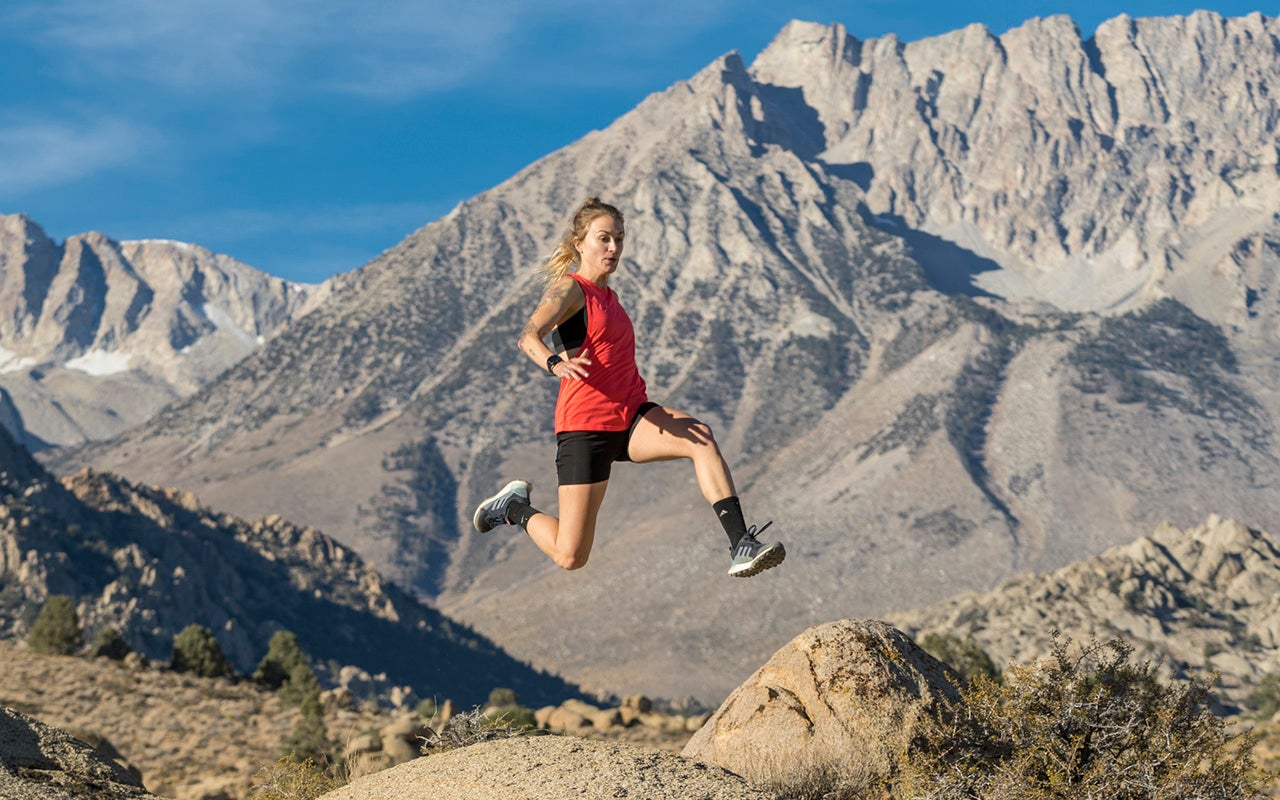How To Race On Your Period

Tessa Chesser by Mike McDermott
As Tessa Chesser lined up for her debut 100-mile race at Run Rabbit Run, she felt a twinge in her stomach. It wasn’t just pre-race jitters. It was her period, and she came prepared.
Chesser was armed with a race plan that incorporated the realities of mother nature. She prepped her crew with specific instructions on what menstrual products to have along the course.
“Tampons, pads, diva cup, absorbent underwear … there’s lots of ways to go about it,” says Chesser.
RELATED: Beating The Boys
Chesser tracks her period with the Clue app so that there weren’t any surprises on race day. Athletes should avoid trying anything new on race day, especially when it comes to being prepared for their period. Chesser recommends getting to know what works best for their body, and to pack extra for longer races, like a 100-miler, since many aid stations won’t provide that type of supplies for athletes. (The women’s trail-running organization Trail Sisters advocates for race directors to provide menstrual supplies, and has a seal of approval races with well-stocked aid stations.)
Embrace it.
Dr. Stacy Sims, a female-athlete performance expert and author of Roar, says women on their periods shouldn’t hesitate to get after it on race day.
“Don’t be afraid of racing on your period,” says Sims. “It is a great time, physiologically, to hit the high-intensity demands of racing.”
Because women are humans, and there’s a lot of natural variation in humans, what each individual experiences may look and feel different. Not everyone may be stoked to run 100 miles during that time of the month. That’s okay too. However, there’s some science that says some women might feel a small performance boost.
During menstruation, women’s estrogen and progesterone levels drop, which lowers an athlete’s core temperature. That can make it easier to hit higher intensities. Heart rate and respiration rates have a larger range too, which can lead to a race-day boost.
“There’s a myth that performance is negatively affected, and that there is an increased risk of iron deficiency if you race on your period,” says Sims. “But that’s not true.”
Barring prohibitively painful cramps or a higher than normal amount of bleeding, there’s no reason menstruation should stop someone from racing, according to Sims.
Chesser recommends dressing for the occasion. She avoids wearing tight-fitting clothing, particularly around her stomach. Ultrarunners might need to wear a looser vest or waist pack to accomodate any cramps or bloating on on the trail. Chesser also opts for dark, double-lined shorts for extra confidence and protection.
Missing periods.
For athletes, not getting periods is a problem. Amenorrhea, or the absence of a regular menstruation cycle, can indicate dangerously low energy availability and endocrine disruption. During intensive training, if the body senses it’s in a starvation state, it will selectively shut down normally functioning systems—like the reproductive system. Sims says that’s a huge red flag.
“Not having a period is a sign of an unhealthy athlete,” she says. “The more we discuss having a period and tracking it, the better we can dial in our training and racing to give women an edge they didn’t have before.”
Break the taboo.
Chesser too advocates for openly discussing the biological reality that is periods and racing.
“Embrace it, don’t shy away from it,” she says. “Coming to terms with the fact that it comes every month, we should start saying, ‘This is the strongest I could feel this month.'”
While navigating menstrual logistics can be a challenge, Chesser pushes back against any notion that getting your period is embarrassing or should negatively affect race-day performance. It certainly didn’t stop her.
“Whether it was PMS, lower back pain or whether my legs were going to pop off, it was essentially all relative at that point because literally everything hurts at mile 80,” says Chesser.
In a tough and competitive race, she snagged a third-place podium finish at Run Rabbit Run 100. She credits part of her performance to owning and accepting her “lady powers,” and adds these encouraging words: “You are Beyoncé running in this bad-ass race during a not-so-fun hormonal time, and you are getting it done!”
Zoë Rom is the Assistant Editor of Trail Runner.